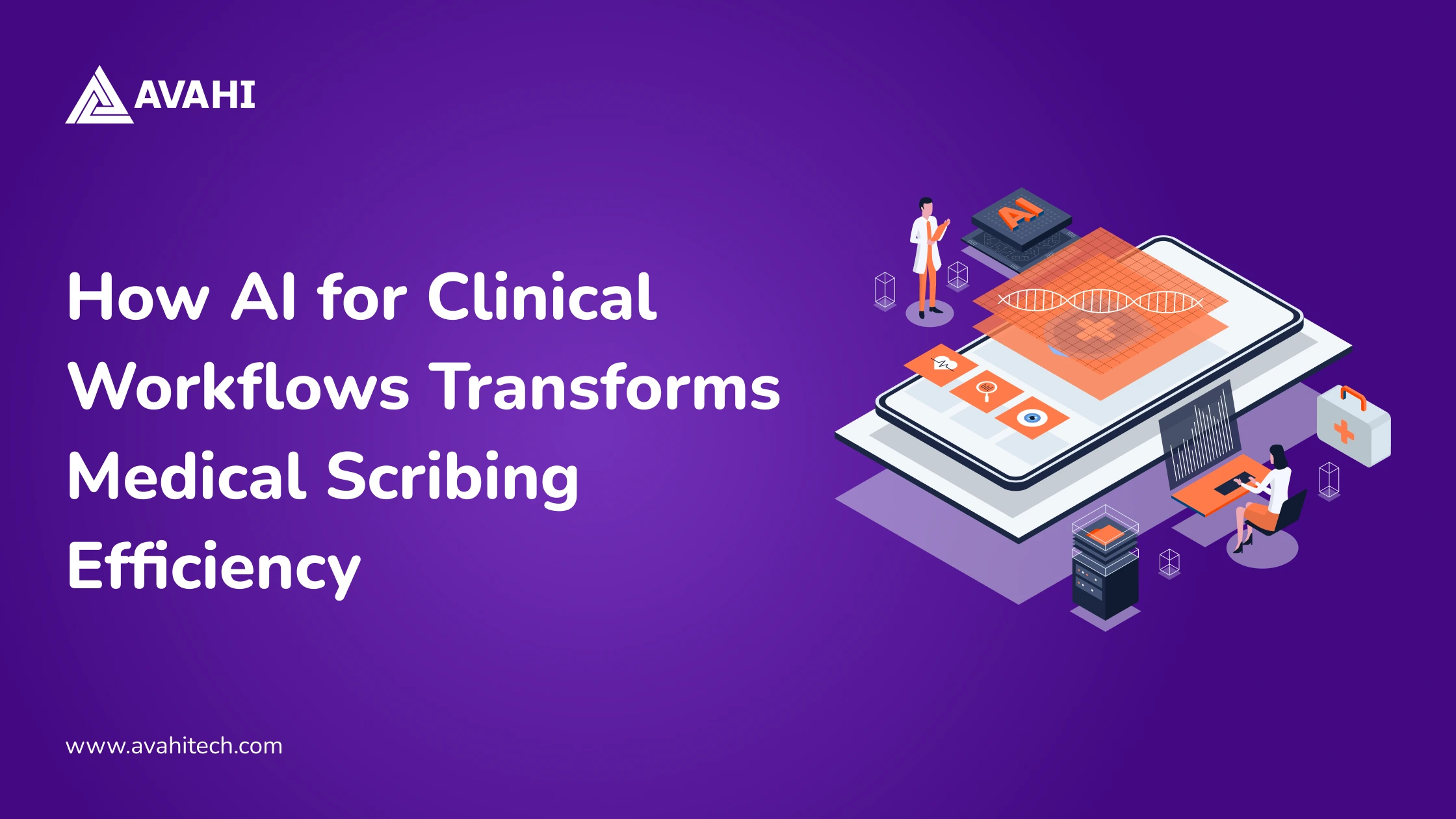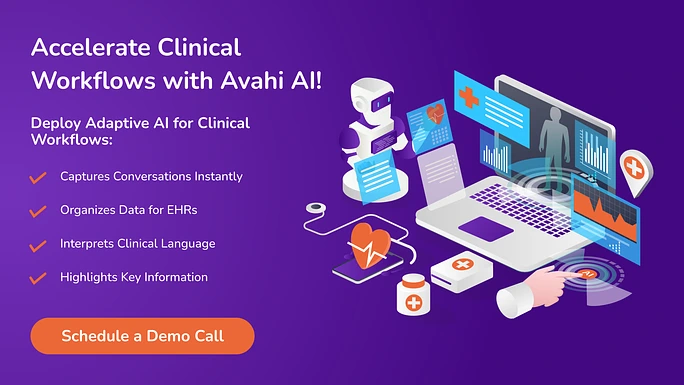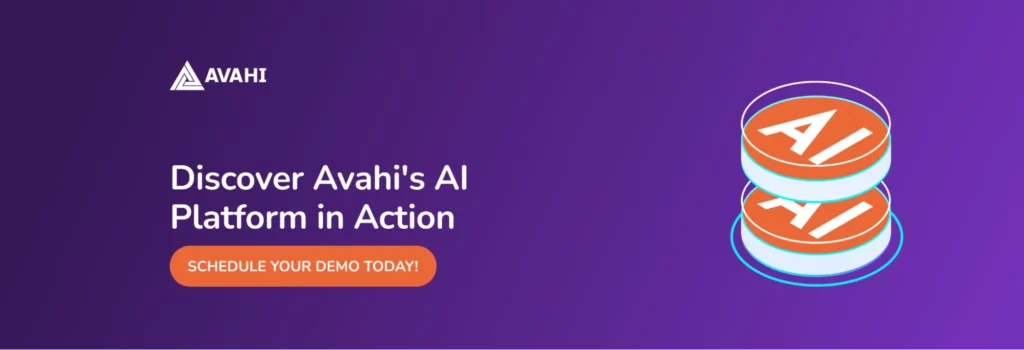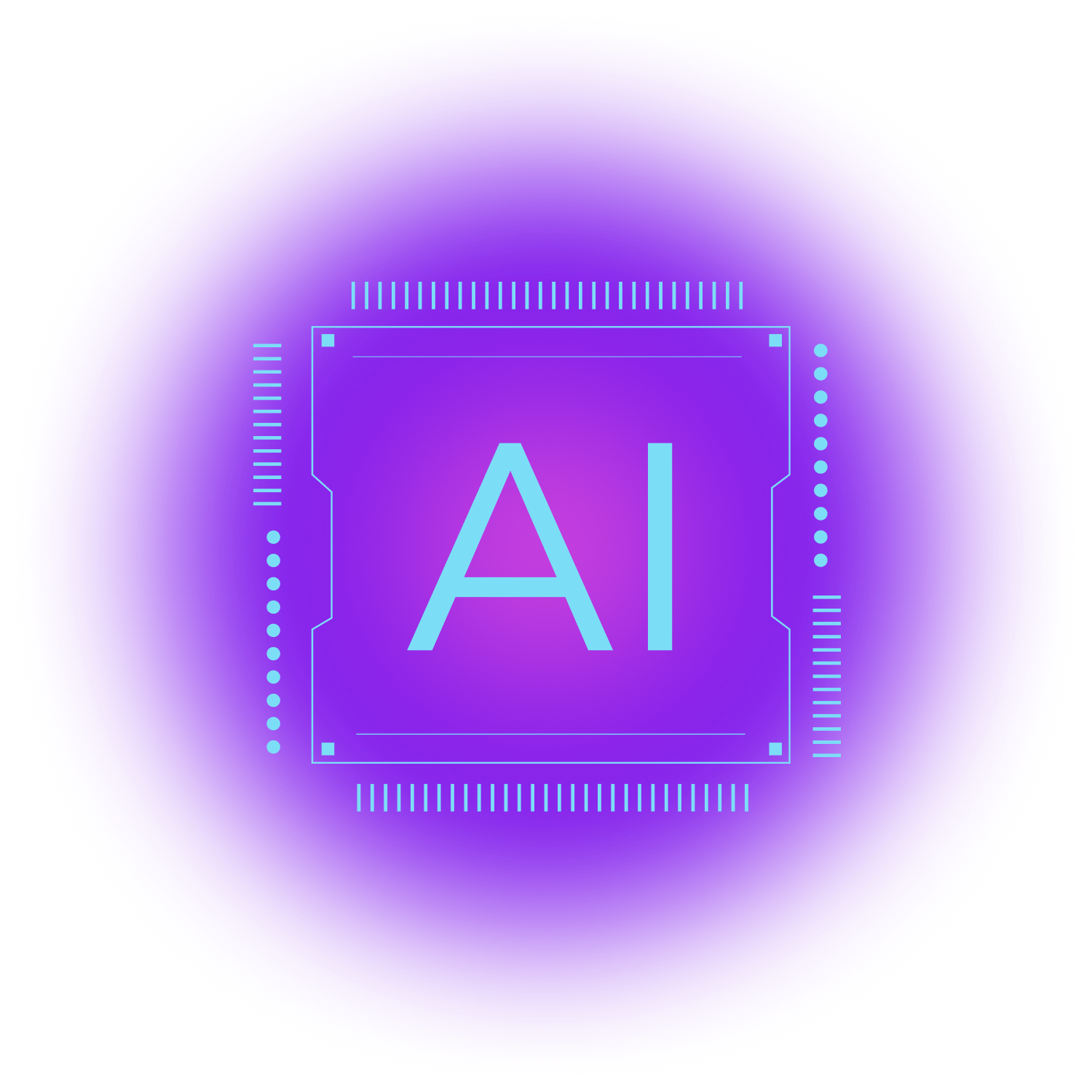Hospitals and healthcare providers today face pressure to deliver high-quality care while managing administrative load. Physicians are burdened with documentation tasks that take valuable time away from patient interaction.
The growing complexity of electronic health records (EHRs) and compliance requirements have turned documentation into one of the most time-consuming parts of clinical practice.
Many healthcare systems are turning to AI for clinical workflows to reduce manual effort and streamline operations to solve this. One of the most effective applications is the AI medical scribe—technology that listens to and documents doctor-patient conversations in real time.
One of the most promising applications is the AI medical scribe, a tool designed to automate clinical documentation by listening to and accurately recording doctor-patient conversations in real time.
This shift is already showing results. A recent study found that EHR time per appointment decreased by an average of 5.6 minutes after implementing virtual scribes, with additional reductions in note-taking time and after-hours work. AI medical scribes are speeding up documentation, reshaping clinical workflows, reducing cognitive load, and allowing physicians to focus more on care delivery.
This blog explores how AI for clinical workflows shapes the role, benefits, and future of AI medical scribes in improving clinical documentation and healthcare efficiency.
Human Medical Scribes: Role and Limitations
Utilizing AI for clinical workflows is addressing many of these limitations. AI-powered scribes do not require constant supervision, can scale across departments, and avoid the confidentiality issues associated with human scribes. They also reduce operational costs and are more sustainable for growing healthcare networks.
Medical scribes have become essential in many healthcare environments, especially in busy clinical settings with high documentation demands.
A human medical scribe is a trained professional who works alongside a physician during patient visits in person or remotely via a live feed. The scribe’s primary responsibility is documenting the clinical encounter in real time and entering detailed notes into the EHR system.
This includes patient symptoms, medical history, physical examination findings, diagnoses and clinical impressions, and recommended treatments and follow-up plans.
By handling these tasks, scribes help reduce the documentation burden on healthcare providers. This allows doctors to devote more time to examining and communicating with patients than navigating computer systems.
Challenges Associated with Human Scribes
Despite its usefulness, the human scribe model has several limitations that make it challenging to scale and sustain long-term.
Scalability
Employing human scribes for every provider across a hospital or clinic system is challenging to scale. It requires extensive hiring, onboarding, and management resources, especially in large or fast-growing healthcare organizations.
According to the American College of Medical Scribe Specialists, the U.S. will employ over 100,000 medical scribes by 2020, and demand is projected to grow due to rising EHR demands. Yet, many institutions struggle to meet this demand due to limited resources and logistical hurdles.
Cost
Human scribes contribute to higher operational expenses. Costs include base salaries, benefits, onboarding, ongoing training, and administrative oversight. For example, the annual cost of employing a single scribe can range from $20,000 to $50,000, depending on the scribe’s role and setting.
This expense can be difficult to justify for smaller clinics and private practices, especially when margins are already tight. These costs can also limit the ability to deploy scribes consistently across departments.
Training and Skill Gaps
Medical documentation requires precision and up-to-date knowledge. Scribes must continuously train to stay familiar with changing clinical guidelines, EHR systems, and medical terminology. High turnover in scribe roles further increases the need for ongoing training.
Privacy and Confidentiality Risks
Having a third party present during a patient consultation can raise serious privacy concerns. This is especially true in sensitive scenarios, such as discussions about mental health, reproductive health, or end-of-life care, where patients may hesitate to speak openly.
A study published in JMIR Medical Informatics found that 14% of patients expressed discomfort with a human scribe during their medical visit. Maintaining patient trust becomes more complicated when additional personnel are involved in intimate healthcare interactions.
AI-Powered Medical Scribes: How They Work
AI medical scribe systems are digital tools that automate documentation using advanced AI technologies. These systems listen to the conversation between the doctor and the patient during a consultation, transcribe the dialogue in real-time, and convert it into structured notes within the EHR. Unlike human scribes, AI scribes don’t require constant human oversight. They use several core technologies to perform their tasks effectively:
- Speech Recognition: Converts spoken language into written text accurately, even in noisy clinical environments.
- Natural Language Processing (NLP): Understand the context and structure of medical conversations, including complex terminology, symptoms, diagnoses, and treatment plans.
- Machine Learning: Learns from data over time, improving the accuracy and relevance of its outputs with each interaction.
How Do AI Scribes Structure Medical Information?
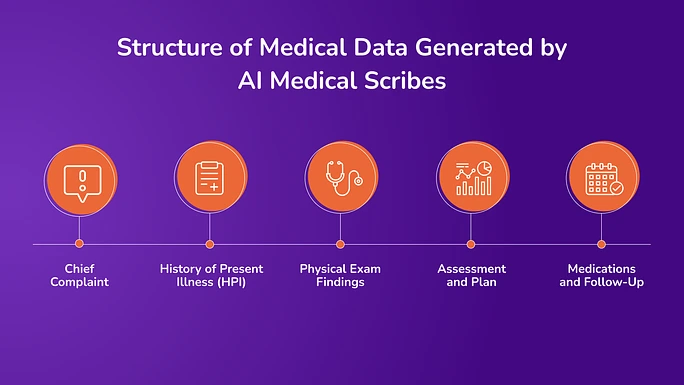
Once the conversation is captured and transcribed, the AI system organizes the information into categorized sections, such as:
- Chief complaint
- History of present illness
- Physical exam findings
- Assessment and plan
- Medications and follow-up instructions
This structured method makes it easier for healthcare providers to access, search, and review patient data quickly.
Essential Responsibilities of an AI-Powered Medical Scribe
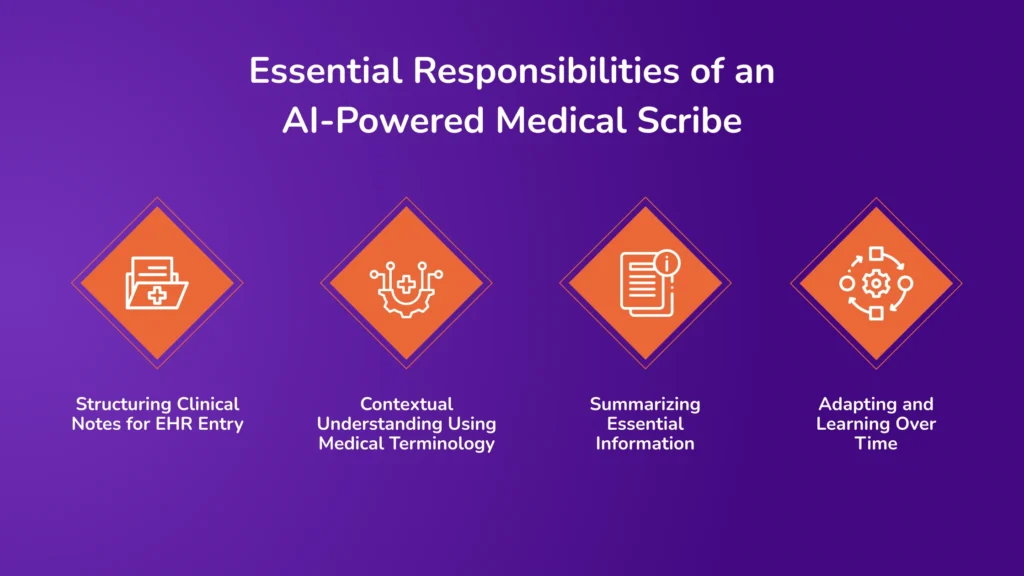
Real-Time Transcription of Clinical Conversations
AI scribes use advanced speech recognition technology to transcribe conversations between doctors and patients as they happen. This process eliminates the need for manual note-taking during or after a consultation. The AI listens passively in the background, either through a device in the room or via telemedicine platforms, and accurately captures the entire dialogue.
Modern systems, such as Nuance’s DAX or Suki, report up to 90 % transcription accuracies in noisy clinical environments. This speeds up documentation and ensures no critical information is missed during fast-paced consultations.
1. Structuring Clinical Notes for EHR Entry
One of the primary roles of an AI scribe is to transcribe and organize that information into clinically structured formats. This includes automatically segmenting notes into standard sections like chief complaint, history of present illness, physical exam findings, assessment and plan, medications, and follow-up.
This structure aligns with how electronic health records (EHRs) are designed. By automating this formatting, AI scribes reduce the time clinicians spend navigating dropdowns and checkboxes within the EHR interface, helping them save up to 3–4 hours per day in some high-volume practices.
2. Contextual Understanding Using Medical Terminology
AI scribes are trained on large datasets of clinical language and medical terminology. This allows them to understand context, differentiate between similar-sounding medical terms, and recognize nuanced information, like distinguishing between a past diagnosis and a current complaint.
For example, if a physician says, The patient denies chest pain but reports shortness of breath during exertion, the AI accurately interprets the contrast and captures the relevant symptoms. Natural Language Processing (NLP) enables this level of contextual awareness, which is critical for generating usable and accurate notes.
3. Summarizing Essential Information
Beyond transcription, AI scribes distill the conversation into actionable summaries. They filter out small talk and unrelated dialogue, focusing only on medically relevant content. This reduces note bloat and ensures that what appears in the record is concise and clinically meaningful.
Some platforms also highlight decision-critical elements, like red-flag symptoms or changes in patient status, making it easier for doctors to review notes quickly. These summaries also support billing, coding, and compliance by ensuring necessary documentation elements are captured.
4. Adapting and Learning Over Time
AI scribes powered by machine learning algorithms improve over time. They adapt to individual clinician preferences, such as note style, commonly used phrases, and specialty-specific terminology. For instance, an orthopedic surgeon and a pediatrician will have different documentation needs, and the AI adjusts accordingly.
Some systems also allow providers to give feedback on documentation accuracy, which the AI then uses to refine future outputs. This ongoing learning process improves performance, reduces correction time, and enhances user trust.
Challenges and Considerations in Implementing AI Medical Scribes
While AI-powered medical scribes offer clear advantages in reducing the documentation burden and improving clinical efficiency, their implementation is not without challenges. Here are some of the challenges that healthcare organizations face while implementing this technology:
1. Data Security and Encryption
AI scribes handle highly sensitive patient information, prioritizing data protection. Encryption is essential for safeguarding health records during storage and transmission. In-transit and at-rest encryption ensure that data cannot be accessed or interpreted without authorized credentials, even if intercepted.
This is particularly important given the rise in healthcare data breaches. According to the U.S. Department of Health and Human Services, more than 88 million individuals were affected by healthcare data breaches in 2023 alone. AI systems become vulnerable to unauthorized access and cyberattacks without robust encryption measures.
2. Access Management and Authorization Controls
Controlling who can access patient data is as essential as securing it. Implementing multi-factor authentication, role-based access, and strict permission protocols helps limit data access to only those with a legitimate need.
These controls protect against internal misuse or accidental data exposure and ensure regulatory compliance with frameworks like HIPAA. Audit logs and activity tracking further support accountability by providing a detailed record of user interactions with the system.
3. Routine Security Audits
Security practices must be continuously evaluated and updated. Regular audits of AI systems allow healthcare organizations to identify vulnerabilities early, respond to emerging threats, and validate the effectiveness of current protections.
These assessments support a proactive rather than a reactive approach to cybersecurity. They also help institutions maintain trust by demonstrating a clear commitment to data safety and regulatory standards.
4. Data Anonymization for AI Training and Research
AI medical scribes require access to large datasets to improve accuracy and performance. To support this without compromising patient privacy, data used for training must be adequately anonymized, removing or masking all personally identifiable information.
This ensures patient confidentiality, even when data is shared across systems or used for secondary purposes such as research or model training. Data masking and differential privacy reduce re-identification risks while enabling meaningful insights.
5. Collaboration with Cybersecurity Experts
Given the complexity of modern healthcare IT environments, working closely with cybersecurity professionals is crucial. Their expertise helps design secure AI infrastructures, develop threat detection systems, and respond effectively to incidents.
These collaborations bring specialized insight into evolving threats and assist in implementing advanced security technologies, including intrusion detection systems and automated monitoring tools.
6. System Integration and Workflow Alignment
Even with strong security, AI scribes must integrate smoothly into clinical workflows. Poor integration can disrupt routines, reduce productivity, and result in underutilization. AI tools must align with EHR systems, support specialty-specific documentation needs, and operate without slowing the consultation process.
Healthcare providers should involve clinicians in the evaluation and selection process to ensure the chosen solution matches their real-world needs.
7. Regulatory Compliance and Legal Risks
All AI medical scribe solutions must comply with national and regional health data regulations, including HIPAA (U.S.), GDPR (EU), and local equivalents. Any misstep in handling or storing protected health information (PHI) can result in severe legal consequences and reputational damage.
It’s important to have clear policies and contracts with vendors that detail responsibilities, data use terms, and protocols in case of security breaches.
Despite these challenges, organizations that invest in AI for clinical workflows can significantly reduce risks while boosting efficiency.
Emerging Trends in AI Medical Scribe Technology: What to Expect
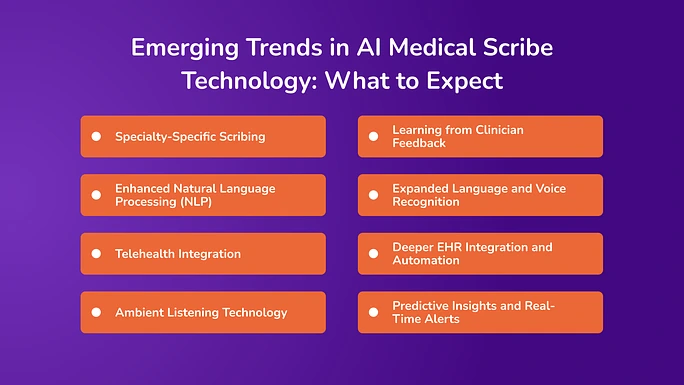
Below are the emerging trends shaping the future of AI medical scribing.
1. Specialty-Specific Scribing
Future AI scribes are being developed to support documentation needs across various medical specialties, such as cardiology, orthopedics, pediatrics, and radiology. These systems will be trained on specialized medical vocabulary and clinical workflows, enabling them to document procedures and terminology specific to each field. This will make the documentation process more accurate and relevant, reducing physicians’ time correcting notes.
2. Enhanced Natural Language Processing (NLP)
AI scribes are expected to feature more advanced NLP capabilities, allowing them to understand the complexity of medical language better. These improvements will help the systems recognize context, medical nuances, and relationships between symptoms, diagnoses, and treatments. This will lead to greater accuracy in transcription and fewer documentation errors.
3. Telehealth Integration
As remote care grows, AI scribes help integrate directly into telehealth platforms. They can transcribe and structure clinical notes during virtual visits as they would in in-person settings. This enables healthcare providers to maintain thorough records across all consultations without additional manual input.
4. Ambient Listening Technology
A significant shift in AI scribing is the introduction of ambient listening. This technology allows the AI to listen to and document conversations passively without requiring manual activation or commands. It creates a non-intrusive, seamless experience for the patient and the provider, making documentation feel like a background task rather than a focus of the visit.
5. Learning from Clinician Feedback
AI scribes will continue to improve by learning from real-time corrections and clinician feedback. These systems adapt to individual speech patterns, documentation styles, and preferred note formats, resulting in more personalized and accurate output over time. This adaptive learning enhances the usability and trust clinicians place in the system.
6. Expanded Language and Voice Recognition
Future AI scribes will support various accents, dialects, and languages. This is crucial in diverse healthcare environments where patients and providers may speak with varied linguistic styles. Better voice recognition increases accessibility and ensures that all conversations are captured accurately, regardless of language differences.
7. Deeper EHR Integration and Automation
Modern AI scribes are being built to interact with major EHR platforms like Epic and Cerner. AI scribes are moving toward tighter integration with Electronic Health Record systems. This means they will create notes and automatically populate patient charts, update medication lists, input vitals, and more, reducing manual data entry and improving consistency across records.
8. Predictive Insights and Real-Time Alerts
Advanced AI scribes will do more than record information. They will begin to analyze patient interactions to detect potential health risks, suggest next steps, or flag missing details in real time. This proactive functionality could support early diagnosis and better clinical decision-making.
AI for clinical workflows is no longer a concept for the future, and it’s a practical tool solving real-world problems today. From reducing documentation time to preventing burnout and improving accuracy, AI-powered medical scribes are changing how healthcare professionals work.
What Sets Avahi Apart in AI Medical Scribe Development?
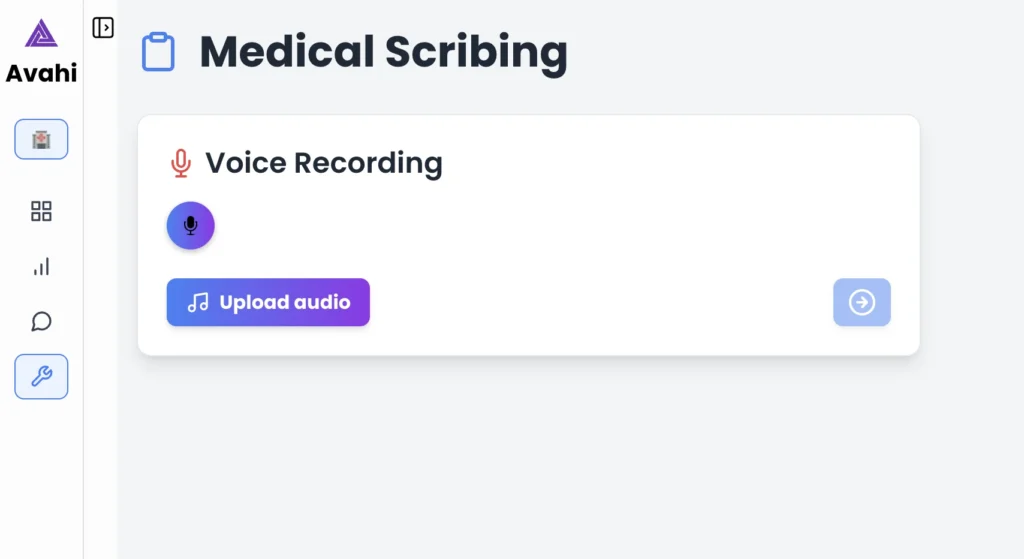
The AvahiAI Platform offers a powerful medical scribing feature to automate and streamline clinical documentation. Here’s how it works within your workflow:
1. Real-Time Transcription (Live or Uploaded)
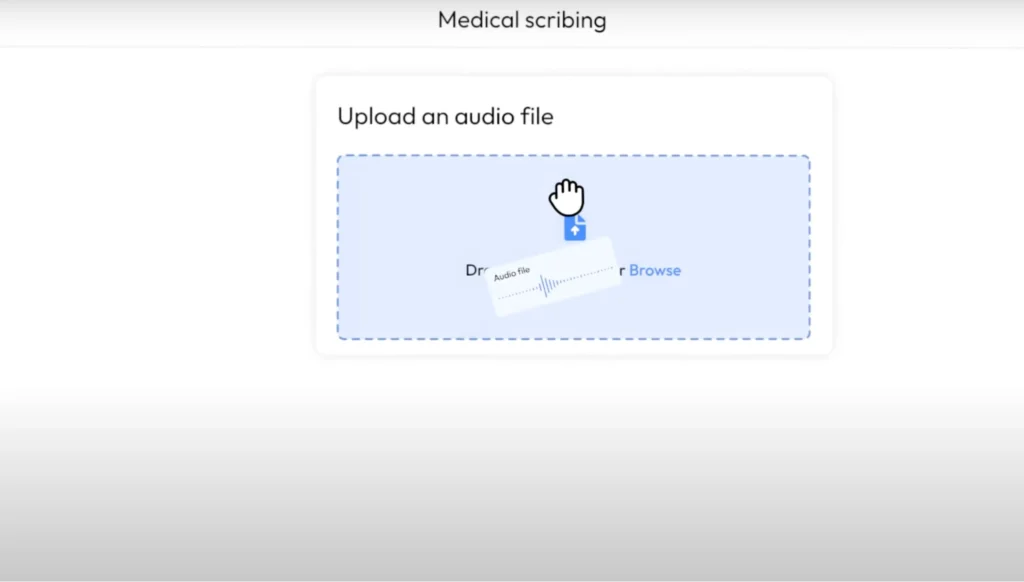
AvahiAI supports both live transcription during consultations and transcription from uploaded audio or video files. Users can simply drag and upload a recorded video of a patient encounter, and the system will begin transcribing it immediately.
Whether you’re speaking in real time or uploading a session for later processing, the AI captures the content with high accuracy and generates a structured clinical note by the end of the session.
2. Speech Recognition During Patient Visits
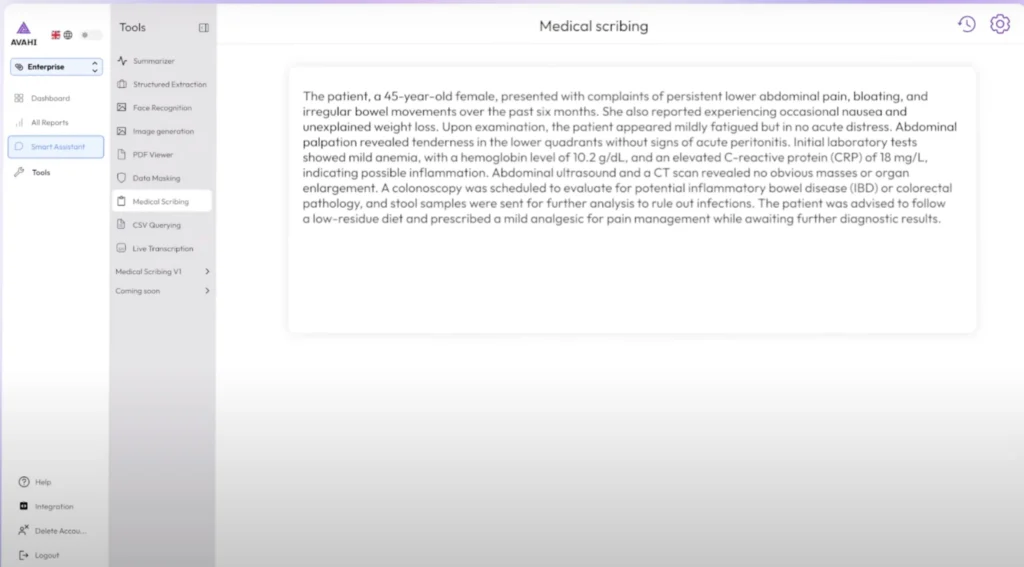
AvahiAI listens during patient consultations or while you dictate notes. Using advanced medical speech recognition, it captures spoken words accurately and converts them into structured text. The system is built to understand medical terminology, abbreviations, and clinical context.
3. Adapts to Your Style and Specialty
AvahiAI learns your preferred documentation style, commonly used phrases, and specialty-specific language. Over time, it delivers clinical notes that reflect your voice and structure, requiring fewer edits.
4. Easy Review and Edits
Once the initial transcription is done, you can review, edit, and approve the note. The platform highlights any uncertain sections for quick verification. The edits will further improve accuracy and personalization in future sessions.
5. EHR-Ready Output
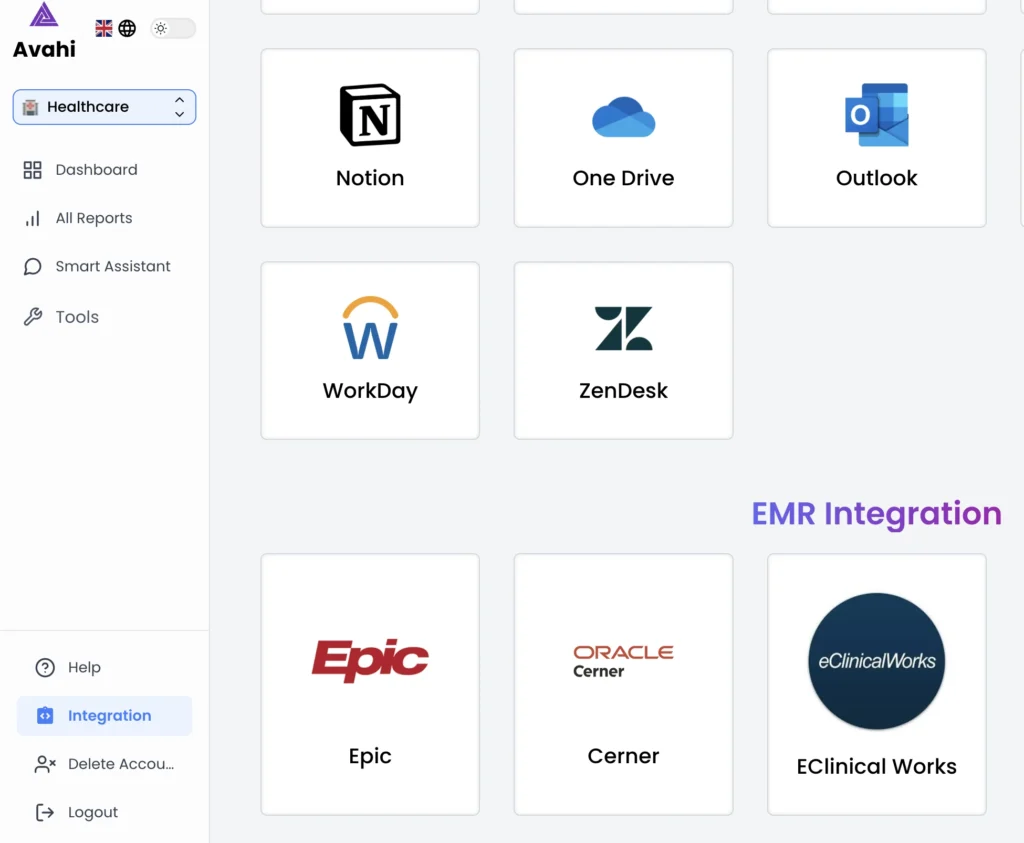
Finalized notes can be easily transferred to your Electronic Health Record (EHR) system using simple copy/paste or direct integration. This helps reduce manual entry and ensures accurate, timely patient records.
The Avahi AI Platform is made to streamline healthcare workflows by automating real-time medical documentation. Built-in medical scribing capabilities help providers capture accurate clinical notes during patient interactions.
Discover Avahi’s AI Platform in Action
At Avahi, we empower businesses to deploy advanced Generative AI that streamlines operations, enhances decision-making, and accelerates innovation—all with zero complexity.
As your trusted AWS Cloud Consulting Partner, we empower organizations to harness AI’s full potential while ensuring security, scalability, and compliance with industry-leading cloud solutions.
Our AI Solutions Include
- AI Adoption & Integration – Utilize Amazon Bedrock and GenAI to enhance automation and decision-making.
- Custom AI Development – Build intelligent applications tailored to your business needs.
- AI Model Optimization – Seamlessly switch between AI models with automated cost, accuracy, and performance comparisons.
- AI Automation – Automate repetitive tasks and free up time for strategic growth.
- Advanced Security & AI Governance – Ensure compliance, fraud detection, and secure model deployment.
Want to unlock the power of AI with enterprise-grade security and efficiency?
Get Started with Avahi’s AI Platform!

